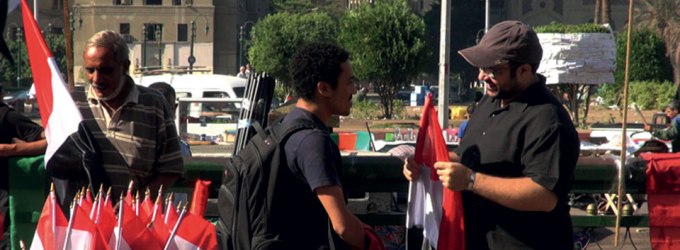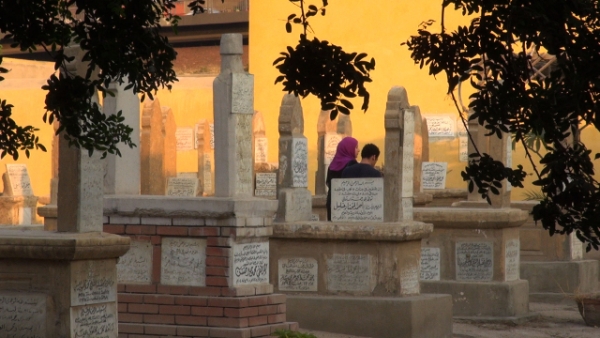 Can images change the world? There is a point in Hala Alabdalla’s haunting film when a famous Arab cartoonist talks of ‘visual illiteracy’. He was one of many that she interviewed – political and social cartoonists and caricature artists who found themselves at the centre of the cascading Arab Spring, a world of change.
Can images change the world? There is a point in Hala Alabdalla’s haunting film when a famous Arab cartoonist talks of ‘visual illiteracy’. He was one of many that she interviewed – political and social cartoonists and caricature artists who found themselves at the centre of the cascading Arab Spring, a world of change.
Alabdalla began filming a project about Arab art just before the revolutions in the Middle East began. She found herself making a very different documentary to the one planned. ‘As if we were catching a cobra’ is itself a very visual metaphor for the role of the artist in a social upheaval – but one where power, dictatorship and brutal repression still holds forth as in current Syria. The phrase is that of Ali Ferzat, a charismatic and influential Syrian cartoonist who was recently set upon by some of Assad’s thugs. They broke his hand as a warning. Cartoons upset dictators. Ferzat uses a memorable phrase, ‘rebellion by irony’.
What gives Alabdalla’s powerful film real edge is its sense of almost eerie calm in a turbulent world. We hear from a group of Egyptian and Syrian artists – mostly cartoonists but one prominent writer, Samar Yazbek, who during the course of filming flees from her native Syria to find refuge in Paris. There is a fascinating mournful, almost elegiac quality in Alabdalla’s film making. We see Damascus and Cairo through the misty and often rain-soaked glass of a car windscreen. Yazbek herself is viewed in Paris through a misty window – perhaps mirroring that truth itself has become opaque in the terrible events of their homelands.
The overriding quality in Alabdalla’s film is melancholy
As the Arab Spring begins in Tunisia, Alabdalla manages to interview the terribly sick and frail Mohieddin Al Labbad, a veteran Egyptian caricature artist at whose feet younger cartoonists sat. She returns a year or so later; Al Labbad has died and the situation in Syria has descended into barbarous slaughter. Too dangerous to film in Damascus she focuses on Cairo where its own dictator has been deposed but initial optimism has already waned. A fascinating time for her to be there. We meet Hazem Al Hamwi, a younger artist, who shows us drawings he never dared to publish. There is some sense of hope here, but not all that much.
The overriding quality in Alabdalla’s film is melancholy. A static or slow-moving camera sets the scene in a Cairo street café or artist’s studio or flat. She often cuts away to a slow exploration of the surrounding room – dark, sad; diffused light coming from a shuttered window, a mournful song played in the background, hope just out of reach.
This is a long film (120 minutes) which focuses on the cartoonists’ humanity rather than their work. What might have been a tedious experience is instead strangely compelling, mesmeric and haunting. Images can indeed change the world.

